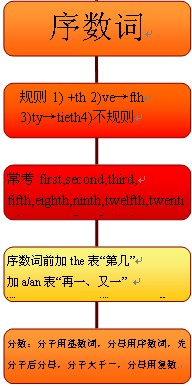请认真阅读下列短文,并根据所读内容在文章后表格中的空格里填入最恰当的单词。注意:每空格1个单词。
Chang'e 3 is a lunar(月球的) exploration mission operated by the China National Space Administration (CNSA), incorporating a robotic lander and China's first lunar rover.
The spacecraft was named after Chang'e, the goddess of the Moon, and is a follow-up to the Chang'e 1 and Chang'e 2 lunar orbiters. The rover was named Yutu following an online poll, after the mythological rabbit that lives on the Moon as a pet of the Moon goddess.
Chang'e 3 achieved lunar orbit on 6 December 2013 and landed on 14 December 2013, becoming the first probe to soft-land on the Moon since Luna 24 in 1976.
In January 2004, the People's Republic of China's lunar orbiter project was formally established. The first Chinese lunar orbiter, Chang'e 1, was launched from Xichang Satellite Launch Center on 24 October 2007 and entered lunar orbit on 5 November. The spacecraft operated until 1 March 2009, when it was intentionally impacted into the surface of the Moon. Data gathered by Chang'e 1 were used to create an accurate 3-D map of the entire lunar surface, assisting site selection for the Chang'e 3 lander.
Chang'e 1's successor, Chang'e 2, was approved on October 2008 and was launched on 1 October 2010 to conduct research from a 100-km-high lunar orbit, in preparation for Chang'e 3's 2013 soft landing. Chang'e 2, though similar in design to Chang'e 1, was equipped with improved instruments and provided higher-resolution imagery of the lunar surface to assist in the planning of the Chang'e 3 mission.
In March 2012, China began manufacturing the body and payload of the Chang'e 3 lander, which will attempt to perform lunar surface and space studies independently of the mission's mobile rover.
Like its orbiting predecessors, the Chang'e 3 mission is planned as a precursor(先驱)to further robotic lunar exploration missions, including Chang'e 5, a sample return mission planned for 2017. Following these automated missions, a manned landing may be conducted around 2025.
Chang'e 3 will attempt to perform the first direct measurement of the structure and depth of the lunar soil down to a depth of 30 m (98 ft), and investigate the lunar crust(壳) structure down to several hundred meters deep.
The development of the six-wheeled rover began in 2002 and was completed in May 2010. It has a total mass of approximately 120 kg, with a payload capacity of approximately 20 kg. It can perform simple analysis of soil samples and may transmit video in real time. It can navigate inclines(斜坡) and has automatic sensors to prevent it from colliding(碰撞) with other objects.
The rover was successfully deployed from the lander, and it made contact with the lunar surface on 14 December. After taking pictures of each other the lander and rover will start their respective science missions. The rover is designed to explore an area of 3 square kilometres during its 3-month mission, with a maximum travelling distance of 10 km.
Title: Chang’e 3
|
__小题1:__
| It is a lunar exploration mission operated by CNSA, incorporating a robotic lander and China's first lunar rover.
|
Name Source
| It was named after the goddess of the Moon, __小题2:__ up the names of Chang'e 1 and Chang'e 2.
|
The
History
of
China’s Lunar Exploration Program
| The program
| In January 2004,it was formally established.
|
本题信息:英语完形填空难度较难 来源:未知
本试题 “请认真阅读下列短文,并根据所读内容在文章后表格中的空格里填入最恰当的单词。注意:每空格1个单词。Chang'e 3 is a lunar(月球的) exploration mission ope...” 主要考查您对 序数词 等考点的理解。关于这些考点您可以点击下面的选项卡查看详细档案。
序数词的概念:
表示顺序的数称为序数词。如:first, second, third, fourth。 序数词的构成与用法:
1、序数词的构成:
①一般来说,是由相应的基数词加词尾th构成。
例:four+th→fourth
six+th→sixth
seven+th→seventh
ten+th→tenth
②下面这些基数词在变为序数词时,有特殊的变化。
例:one→first
two→second
three→third
five→fifth
eight→eighth
nine→ninth
twelve→twelfth
③十位整数序数词的构成方法是将基数词的词y变成i,然后再加eth。
例:twenty→twentieth
thirty→thirtieth
forty→fortieth
ninety→ninetieth
④两位或两位以上的基数词变成序数词时,仅将个位数变成序数词。
例:twenty-one→twenty-first
thirty-five→thirty-fifth
a hundred and fifty-three→a hundred and fifty-third
2、序数词的用法:
①序数词在使用时,一般加上定冠词。
例:the first book
the second floor
the third day
the fourth week.
②序数词在多数情况下都用作定语,有的也可以作表语、主语和宾语。
例:The may1st is Labour Day. 五月一日是劳动节。
My room is on the second floor. 我的房间在二楼。
The first is larger than the secon.(主语)第一个比第二个大。
Read the book from the first.(宾语)从开头读这本书。
You'll be the sixth to write.(表语)你将是第六个写的。
③序数词的前面可以加上不定冠词,用来表示“再一”,“又一”的意思。
例:You may have a third try. 你可以第三次尝试。 序数词知识体系:

约数的表达方法:
用tens/dozens/scores/hundreds/thousands/millions of 表示“几十、几百、上千、成千上万”等。
如:The boy bought dozens of pencils.
Thousands of people died in the earthquake.
注意: (A):dozen, score, hundred, thousand, million等表示确切数量时,不用复数。
如:five dozen (of) eggs 五打鸡蛋
hree hundred people 三百个人
分数词的构成和用法:
1)分数词构成法:
分数词(FractionalNumerals)由基数词和序数词构成,基数词代表分子,序数词代表分母。除了分子为1的情况下,序数词都要用复数形式:
如:1/4:one-fourth
5/9:five-ninths
2/3:two-thirds
17/5:three and two-fifths
7/12:seven-twelfths
379/8:forty-seven and three-eighths
此外还有下面表示法:
如:1/2:a(one) half
1/4:a(one) quarter
3/4:three-quarters
9/4:two and a quarter
3/2:one and half
31/4:seven and three quarters
与“请认真阅读下列短文,并根据所读内容在文章后表格中的空格里...”考查相似的试题有:
|